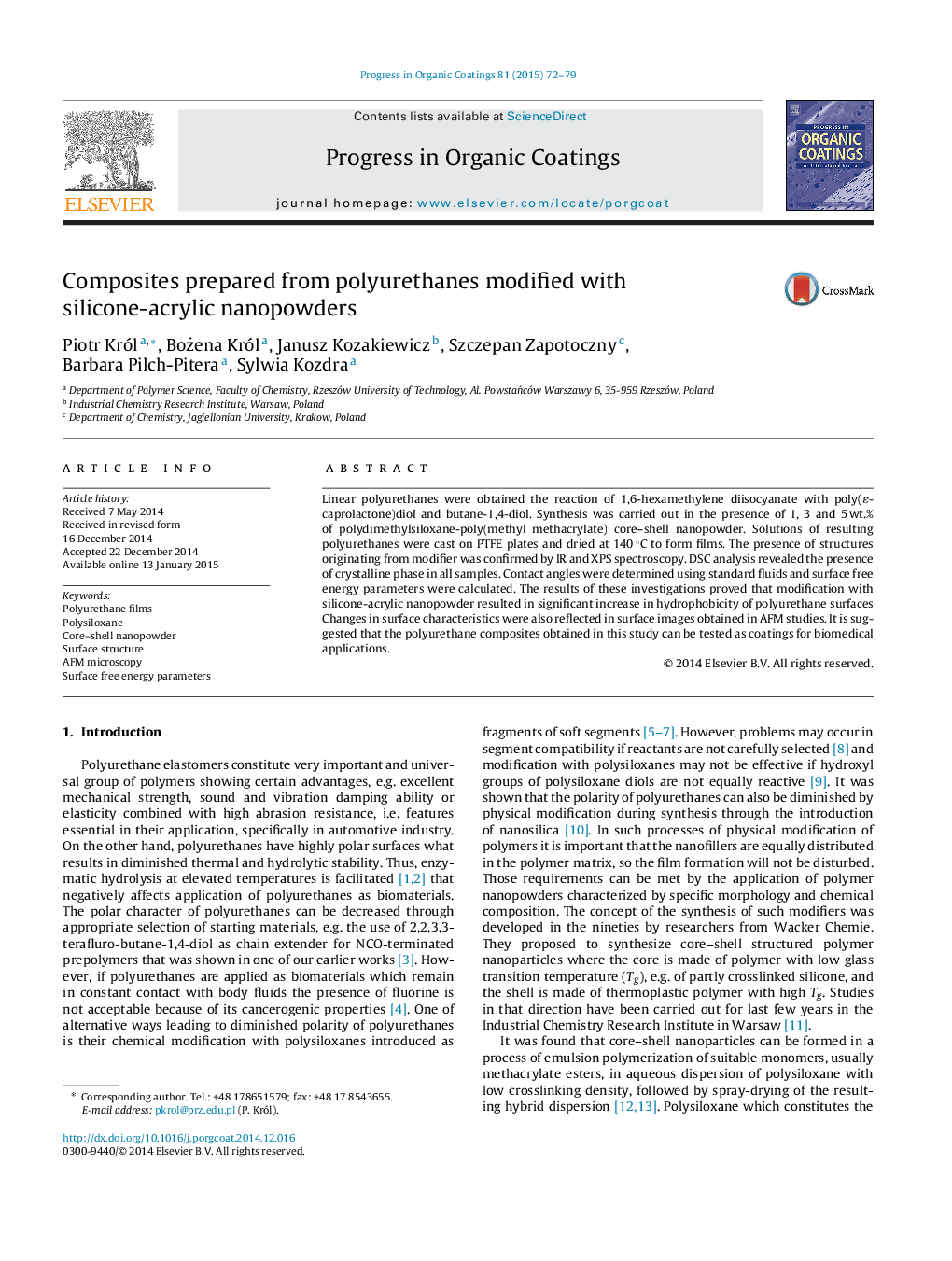| Article ID | Journal | Published Year | Pages | File Type |
|---|---|---|---|---|
| 692226 | Progress in Organic Coatings | 2015 | 8 Pages |
•Poly(methyl methacrylate-siloxane) nanopowder was incorporated into linear polyurethanes.•The presence of structures originating from modifier was confirmed by IR, XPS and DSC analysis.•Changes in surface characteristics were reflected in surface images obtained in AFM studies.•Core–shell nanopowder causes a significant increase in the hydrophobicity of the coatings.
Linear polyurethanes were obtained the reaction of 1,6-hexamethylene diisocyanate with poly(ɛ-caprolactone)diol and butane-1,4-diol. Synthesis was carried out in the presence of 1, 3 and 5 wt.% of polydimethylsiloxane-poly(methyl methacrylate) core–shell nanopowder. Solutions of resulting polyurethanes were cast on PTFE plates and dried at 140 °C to form films. The presence of structures originating from modifier was confirmed by IR and XPS spectroscopy. DSC analysis revealed the presence of crystalline phase in all samples. Contact angles were determined using standard fluids and surface free energy parameters were calculated. The results of these investigations proved that modification with silicone-acrylic nanopowder resulted in significant increase in hydrophobicity of polyurethane surfaces Changes in surface characteristics were also reflected in surface images obtained in AFM studies. It is suggested that the polyurethane composites obtained in this study can be tested as coatings for biomedical applications.
Graphical abstractFigure optionsDownload full-size imageDownload as PowerPoint slide
